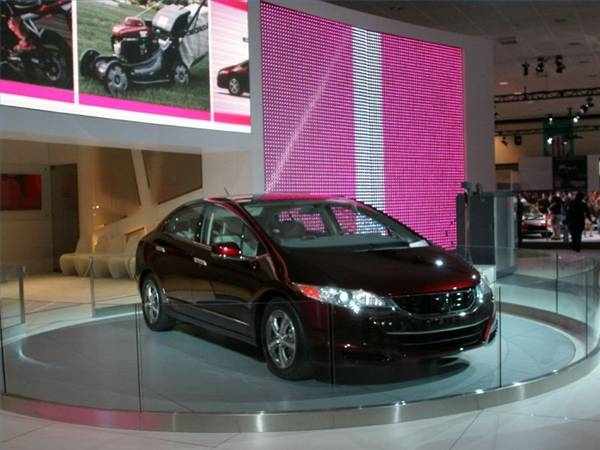
There are a few types of fuel cells available, but all work on the principle of taking hydrogen, or extracting it from a hydrogen-rich fuel, and combining it with oxygen. Heat and water are produced and in the electrochemical process, electricity is created. If the hydrogen is extracted from a hydrogen-rich fuel, then small amounts of other waste products will be produced.
Proton exchange membrane fuel cells, or polymer electrolyte membrane fuel cells, also known as PEMFCs, use pure hydrogen and oxygen as fuel but combine them to produce electricity to power a vehicle. PEMFCs are regarded as the best choice for vehicles because of their lack of pollution. PEMFCs also generate more power per volume and weight per fuel cell. They are compact and lightweight, and they have an operating temperature of less than the boiling point of water.
The electrolyte in a PEMFC is a thin solid polymer membrane. There are two processes occurring, one on the anode side and the other on the cathode side. First, hydrogen is pushed into the fuel cell where it comes in contact with the anode. Second, a hydrogen molecule is split into two positive hydrogen ions (protons) and two negative electrons. While the hydrogen ions move across the electrolyte, the electrons move up the anode and through an external circuit. Third, the electrons produce electricity before reaching the cathode side.
On the cathode side, hydrogen ions flowing through along with the electrons react with the oxygen being pushed toward the cathode. Oxygen combines with the hydrogen ions and electrons to form water. The chemical formula for the process is two molecules of hydrogen and one molecule of oxygen form two molecules of water.
Unfortunately, hydrogen alone is not a naturally occurring element on Earth. If a fuel cell vehicle doesn't have access to pure hydrogen, then hydrogen can be extracted form hydrogen-rich fuels. A reformer is a device that does just this. However, the hydrogen extracted is not as efficient as pure hydrogen, and some pollutants can result from the extraction process. This is why researchers have spent most of their effort working to make PEMFCs the next energy source for vehicles.